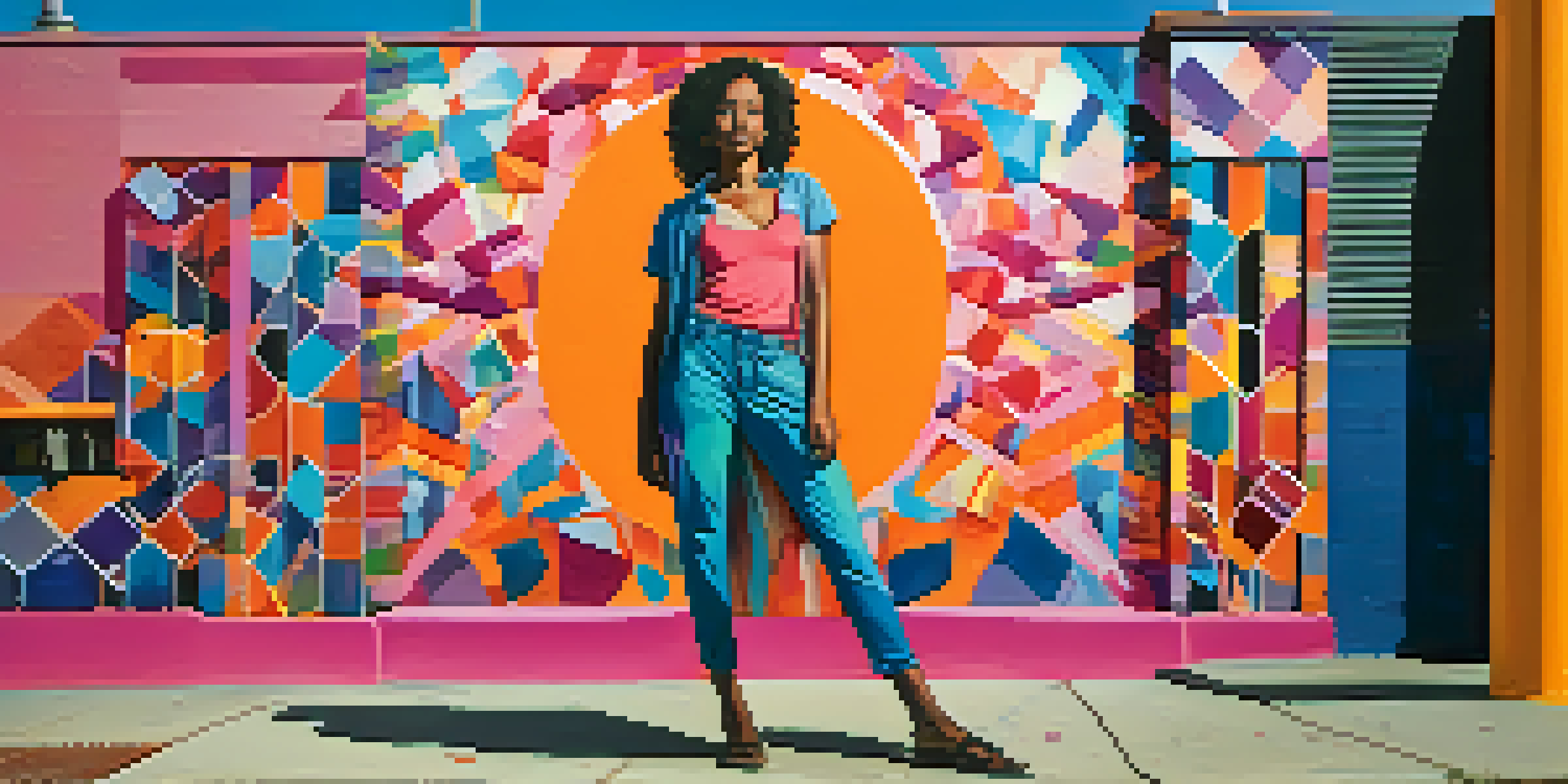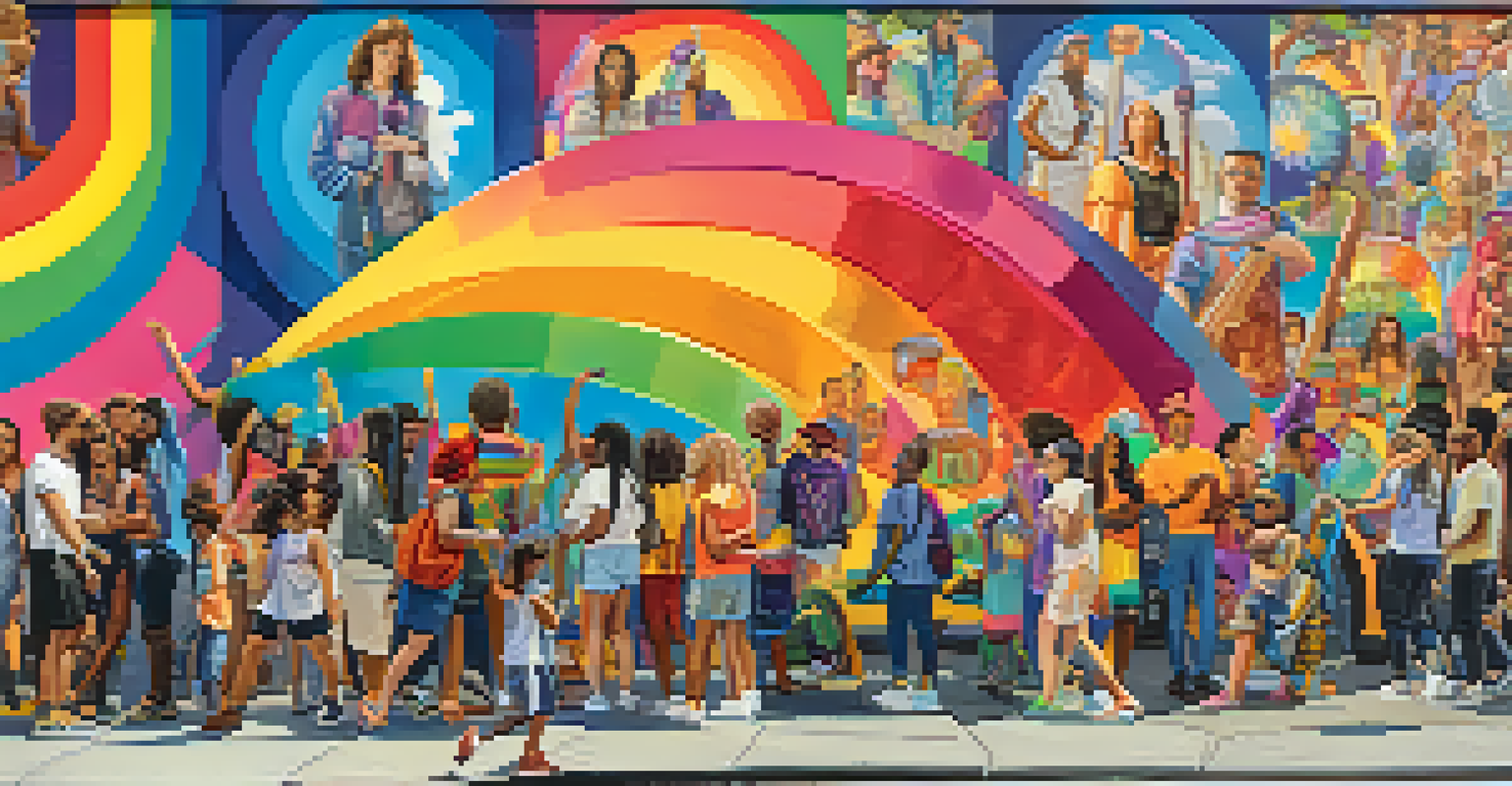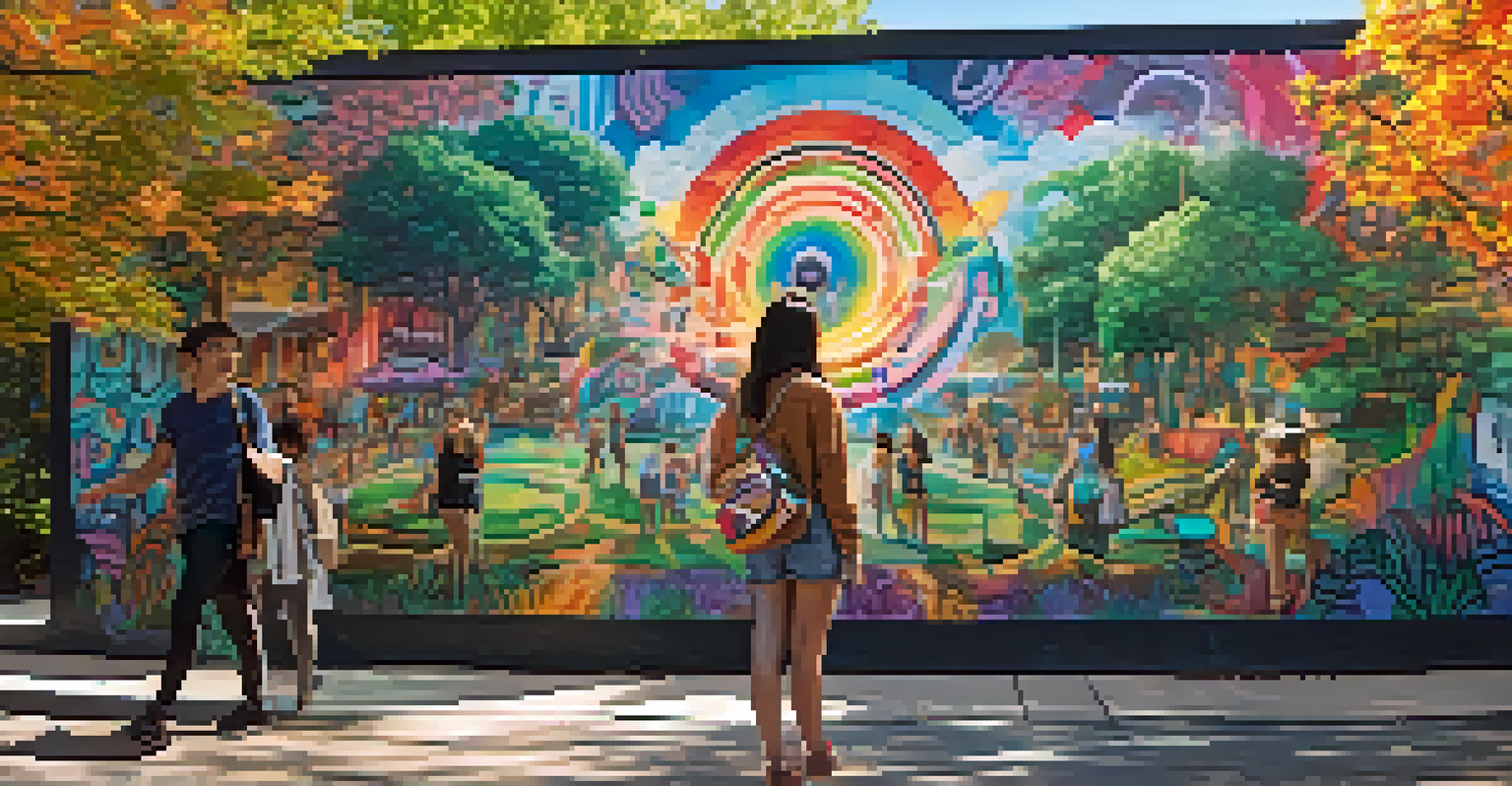The Influence of Street Art on Gender Identity Awareness

Understanding Street Art as a Medium for Expression
Street art has evolved from mere vandalism to a legitimate form of artistic expression. It serves as a powerful medium for conveying messages that resonate with a wide audience. Artists use walls as their canvas to tackle various social issues, including gender identity, making their work accessible and engaging for the public.
Art is not a mirror to hold up to society, but a hammer with which to shape it.
Unlike traditional art forms that might be confined to galleries, street art invites interaction and dialogue. This accessibility helps demystify complex themes, allowing people from varying backgrounds to engage with ideas about gender identity. Essentially, street art transforms public spaces into platforms for conversation.
The dynamic nature of street art means it can adapt to current events and societal changes, making it a relevant form of communication. As discussions around gender identity evolve, so does street art, reflecting the shifting landscape of these conversations. This fluidity helps keep the topic fresh and pertinent in the public eye.
How Street Art Challenges Traditional Gender Norms
Many street artists use their work to challenge conventional gender norms and stereotypes. By portraying individuals in non-traditional roles or showcasing diverse gender expressions, they invite viewers to reconsider societal expectations. This can be particularly impactful in cultures where rigid gender roles are the norm.

For instance, murals depicting strong female figures or androgynous characters help to dismantle outdated ideas about masculinity and femininity. These visual representations can inspire conversations among viewers about their own beliefs and experiences. Moreover, they create a sense of visibility for marginalized identities often overlooked in mainstream media.
Street Art as Social Commentary
Street art serves as a powerful platform for discussing social issues, particularly gender identity, by transforming public spaces into interactive canvases.
The challenge presented by street art lies in its ability to provoke thought and discussion. When people encounter these works in everyday settings, they are forced to confront their preconceptions about gender. This can lead to greater awareness and understanding, ultimately fostering a more inclusive society.
Street Art as a Space for Marginalized Voices
One of the most significant aspects of street art is its ability to amplify marginalized voices, particularly in discussions surrounding gender identity. Artists from the LGBTQ+ community often use this medium to express their experiences and advocate for their rights. By sharing their stories through vibrant visuals, they create a sense of solidarity and community.
The role of the artist is to make the revolution irresistible.
For example, murals that celebrate transgender individuals or highlight issues faced by non-binary people can help raise awareness and foster empathy. These artworks not only serve as a form of self-expression but also educate the broader public about the challenges these communities encounter. Thus, street art becomes a rallying point for activism.
Additionally, the collaborative nature of street art often brings together different groups to create cohesive messages. Events such as mural festivals or community painting days encourage participation and dialogue among diverse populations. This collaborative spirit can enhance understanding and support for various gender identities.
The Role of Public Spaces in Gender Identity Discussions
Public spaces are crucial for the dissemination of street art and the ideas it conveys. These areas allow for spontaneous interactions and discussions about the themes depicted, including gender identity. When art is placed in communal areas, it encourages people to engage with it in a way that might not happen in a gallery setting.
Moreover, the presence of street art in public spaces challenges the notion that gender identity issues belong solely in academic or private discussions. By placing these conversations in everyday environments, artists normalize discussions about gender diversity and inclusivity. This can lead to a broader acceptance of varied identities.
Challenging Gender Norms
Through diverse representations, street art actively challenges traditional gender norms, prompting viewers to reconsider societal expectations.
As people encounter gender-themed street art in their daily lives, they may become more open to exploring their own views on gender. This exposure can spark curiosity and foster a more informed and open-minded society. Ultimately, public spaces become vital arenas for shaping conversations around gender identity.
The Impact of Social Media on Street Art and Gender Awareness
The rise of social media has transformed how street art is shared and perceived, amplifying its impact on gender identity awareness. Platforms like Instagram allow artists to showcase their work to a global audience, transcending geographic boundaries. This wider reach means that conversations about gender identity can take place on an international scale.
Social media also enables viewers to engage with street art beyond a fleeting glance. They can discuss and share their interpretations, leading to deeper dialogues about the themes presented. This interaction fosters a sense of community among those interested in gender issues, creating networks of support and understanding.
Furthermore, social media serves as a platform for artists to connect with their audiences, inviting feedback and collaboration. This two-way communication can enrich the narrative surrounding gender identity, as artists respond to societal shifts and audience reactions. In this way, social media plays a crucial role in the evolution of street art as a vehicle for awareness.
Street Art Festivals and Their Role in Promoting Gender Diversity
Street art festivals have become significant events for promoting gender diversity and inclusivity. These gatherings often feature a diverse lineup of artists, showcasing works that address various gender identities and issues. By creating spaces where these conversations can thrive, festivals help foster a sense of community and acceptance.
During these events, artists can collaborate on large-scale murals that reflect shared values and experiences related to gender identity. This collective effort not only amplifies individual voices but also creates a powerful statement about unity and support for marginalized communities. The visual impact of these collaborative works can leave a lasting impression on viewers.
Amplifying Marginalized Voices
Street art amplifies marginalized voices, especially from the LGBTQ+ community, fostering solidarity and raising awareness about gender identity issues.
Additionally, street art festivals often include workshops and discussions focused on gender issues, further enriching the experience for attendees. These educational components encourage dialogue and understanding, making the festival a holistic approach to promoting awareness. Ultimately, such events highlight the vital role street art plays in fostering gender identity discussions.
Future Directions: Evolving Themes in Street Art and Gender Identity
As society continues to evolve, so too will the themes explored in street art related to gender identity. Emerging artists are likely to push boundaries even further, exploring intersectionality and how various identities overlap. This evolution reflects the growing complexity of societal discussions around gender and identity.
New technologies and mediums may also influence how street artists convey their messages. For instance, augmented reality could allow viewers to interact with murals, offering a more immersive experience. This innovation could serve as a powerful tool for educating the public about gender identity in engaging and thought-provoking ways.

Ultimately, the future of street art will likely continue to challenge norms and provoke dialogue. As artists respond to changing cultural landscapes, they will remain at the forefront of raising awareness about gender identity issues. The role of street art in shaping these conversations will be crucial in fostering a more inclusive society.